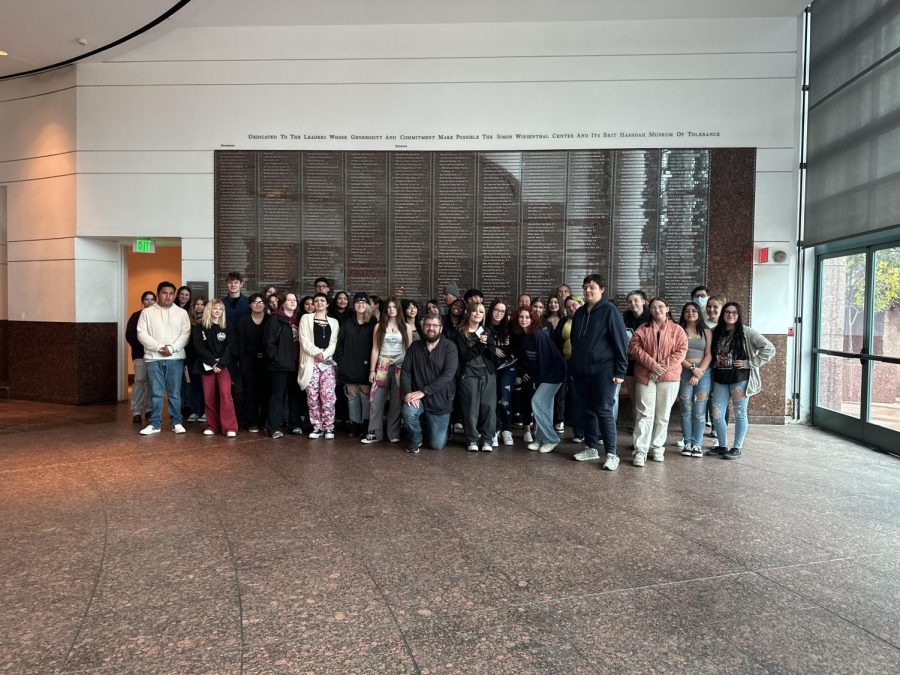Museum of Tolerance brings an eye-opening experience for Criminal Justice class
Criminal Justice students visit the Tolerance/Holocaust museum in Los Angeles to educate themselves about the history of discrimination.
March 20, 2023
On Tuesday, March 14, students from the Burroughs Criminal Justice classes visited the Museum of Tolerance in Los Angeles to see the importance of a just society for all.
Criminal Justice Teacher Richard Smith is a former police officer and went through the museum as part of his training.
“Our tour had us focus on ‘Tools for Tolerance,’” said Smith. “These professional development courses, which are attended by groups that include law enforcement personnel, health care providers, educators and corporate executives, focus on how to be more inclusive, combat implicit bias, and improve community relations.”
While the Museum has a strong focus on the history of the Holocaust, the exhibits tackle a wide range of issues historical and contemporary issues. When the class arrived, they visited the “Para Todos Los Niños” (For All The Children)” exhibit to see that the Latino families in Southern California struggled from segregation as well.
“I believe it’s important to visit the museum because we’re able to see and understand a different perspective on a subject that I already thought I knew so much about before,” said senior Jhovany Rivero.
Afterward, they visited the “Social Lab” and observed different biases. Students sat down in the “Forum” and debated which action would ensure a safer and more inclusive society. The top two topics of debate were whether stricter gun laws or diversity initiatives would be more efficient. Through it all, the students felt engaged by the tour guide’s enthusiasm.
“The tour guide was really interesting and educated,” said junior Dascha Gladcenko.
When students were asked if all the global crises in the world were natural, some nodded their heads. The tour guide then challenged them, and asked, “Why are we in an environmental crisis?” The answer was humanity.
Lastly, the students explored the Holocaust exhibit, which was sound-and-light guided.
The exhibit covered the periods from the 1920s to 1945, and included many artifacts and simulations.
Each visitor received a card of a child who was alive during the Holocaust, and afterwards, were asked to scan the card and see if the child survived. It was a moving way to personalize the sheer numbers of lives lost during this time.
“I thought it was really interesting,” said senior Devin Fitzpatrick. “There were many artifacts and cool pieces displayed.”
After the tour, the students reflected on the Museum and many agreed that it was the most emotionally charged museum they’ve ever visited; however, Smith achieved his goal of teaching his students about the eye-opening facts of history.

